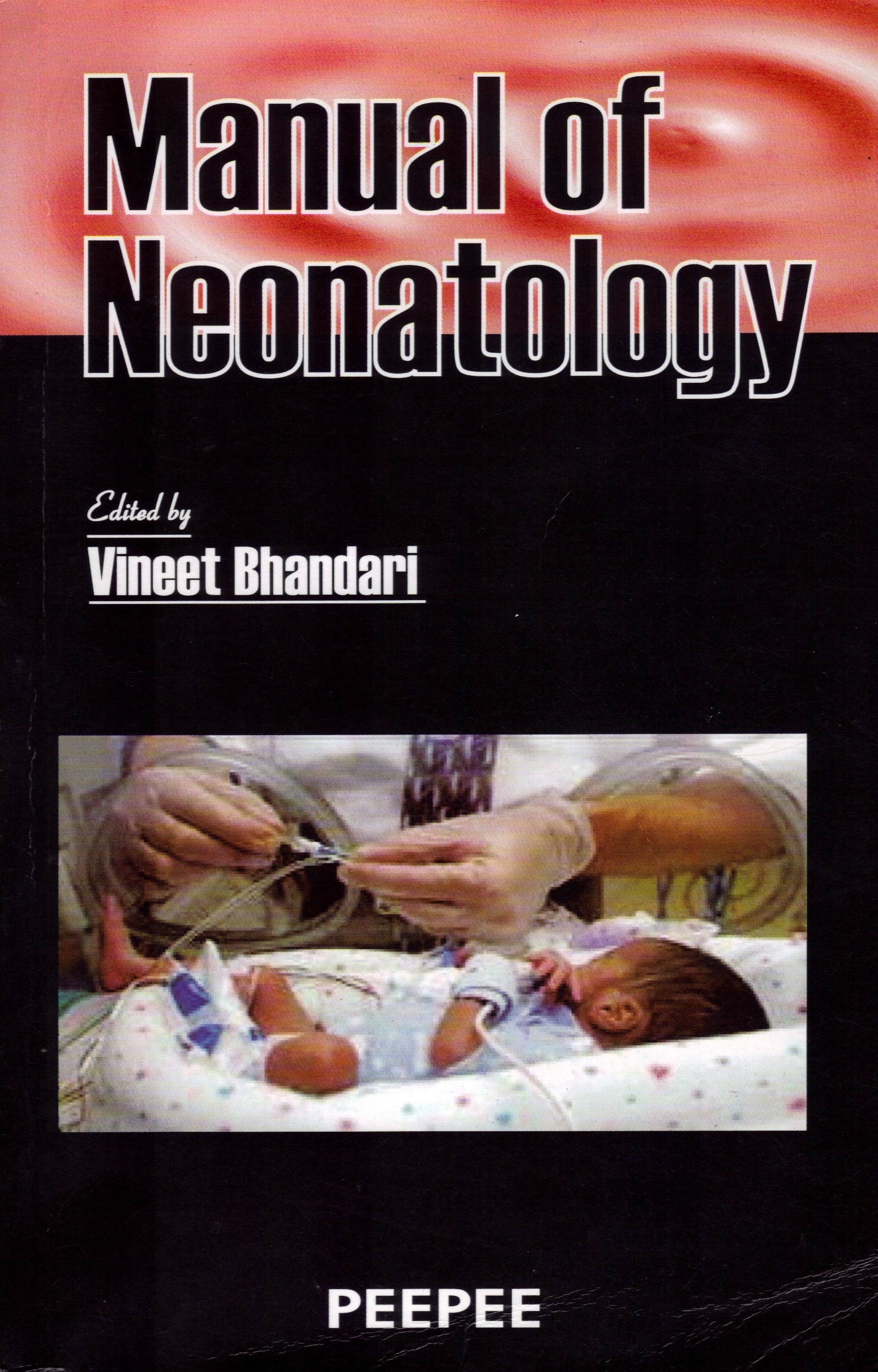 Dr. Vineet Bhandari (MD, DNB, DM, FAAP) completed his pediatric and neonatology training from the Post Graduate Institute of Medical Education and Research, Chandigarh, India, and finished a residency in pediatrics and fellowship in neonatal-perinetal medicine from university of Connecticut, USA. He has authored over 175 book chapters, original research articles and abstracts. It is a matter of great pleasure to review his book titled ‘Manual of Neonatology’. Neonatology is a challenging as well fast progressing branch of medicine. The advances in the field of neonatal medicine have revolutionized the basic concept in the management of newborn babies.
Dr. Vineet Bhandari (MD, DNB, DM, FAAP) completed his pediatric and neonatology training from the Post Graduate Institute of Medical Education and Research, Chandigarh, India, and finished a residency in pediatrics and fellowship in neonatal-perinetal medicine from university of Connecticut, USA. He has authored over 175 book chapters, original research articles and abstracts. It is a matter of great pleasure to review his book titled ‘Manual of Neonatology’. Neonatology is a challenging as well fast progressing branch of medicine. The advances in the field of neonatal medicine have revolutionized the basic concept in the management of newborn babies.
Indeed, it is a need for all those who are involved and concerned with the care and management of the newborns to have basic knowledge of the subject. The distinguished contributors of this have made all the efforts to impart their vast knowledge and experience to the readers. This book is a “Ready Reference Book” for a practical approach to the problems of the newborns. However to have in depth knowledge of the subject, reader should refer to the standard textbooks of neonatology.
The author has used “rule of nine” and discussed the various problems. I am very sure that this will be highly appreciated by the readers of this book. I found that the various tables given in this book are a great practical value.
History taking is an art and it is the first step in learning clinical medicine. The author has very well emphasized the role of proper history-taking in arriving at the clinical diagnosis.
It is very essential to have the most fundamental knowledge of fluid and electrolyte balance, carbohydrate and calcium metabolism, and the role of nutrients in the management. In the backdrop of these basic physiological changes, the variations occurring during the disease states are very well demonstrated by the author.
Prematurity is one of the most challenging problems faced by a neonatologist today. Recent management of this problem focuses on the prevention of preterm birth. Thus various aspects of this condition could be better addressed if these are discussed under the same heading.
Resuscitation of a newborn is often a difficult task especially for a beginner. However with understanding of the basic principles of management and following the rule of DO’S and DON’T’S – a treating doctor will definitely acquire skill and confidence for doing successful resuscitation. This practical aspect is discussed well by the author.
The chapter on ‘Air Leak Syndrome’ is very descriptive at the same time self explanatory. The etiology and pathogenesis is explained in a very simple way. The most striking is the radio-diagnosis with good illustrations of different x-rays. The preventive role of management in ‘Air Leak Syndrome’ is aptly discussed here.
The modern practice of neonatology is concerned not only with reduction in mortality but also focuses on giving a better quality of life. The book has covered this aspect very well emphasizing the preventing aspects of management. The knowledge and experience of all the contributors from different part of the world have helped to make this book- complete, concise and most practical. I am sure that this book will prove to be beneficial to all. After reading and acquiring knowledge in the subject, the treating doctor will emerge confident to manage the newborn babies, offering then a good start in life.
Professor N. N. Munshi
Head, Department of Pediatrics
SSR Medical College, Mauritius
Email: drnnmunshi@yohoo.com